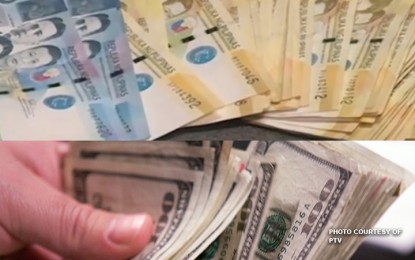
MANILA – An economist of ING Bank Manila has forecast the Philippine peso to end the last quarter of 2020 at about 50.36, slightly weaker than its 49-level to date, on expectations that imports would also recover in the near term.
In a virtual briefing on Friday, ING Bank Manila senior economist Nicholas Mapa said the peso’s current strength cannot be considered as general strengthening since this was caused partly by lack of demand for the greenback.
Mapa said the local currency is among the strongest in the region to date, even better than the Japanese yen.
He attributed this to the decline in imports due to the general drop in domestic demand because of the pandemic.
Mapa said dollar demand among large companies is also low since they need to keep their peso liquidity “to keep afloat, to keep their workers, to augment the salary for their workers because there's no cash flow.”
“They have to generate cash flow and one easy way to do that is (a) drawdown in FCDU (foreign currency deposit unit),” he said.
Government data show that imports last May contracted by 40.6 percent year on year to about USD5.85 billion.
Mapa said Philippine imports rose to as much as USD112 billion in 2018 due to the high demand for raw construction materials, among others.
Despite the current situation, he said he is optimistic about the recovery of the Philippine economy in the third quarter.
Growth, as measured by gross domestic product (GDP), contracted by 0.2 percent in the first quarter, the first negative output since the last quarter of 1998.
Mapa projected the contraction to further deepen to 6.3 percent in the second quarter or during the height of the lockdown before recovering to -5.8 percent in the third quarter and -3.5 percent in the last quarter.
He saw growth to further improve and postpositive figures of 3.5 percent, 5.7 percent, 5.8 percent, and 4.5 percent from the first to the fourth quarters of 2021 on the continued implementation of fiscal and monetary stimulus measures and the return of consumer confidence. (PNA)
